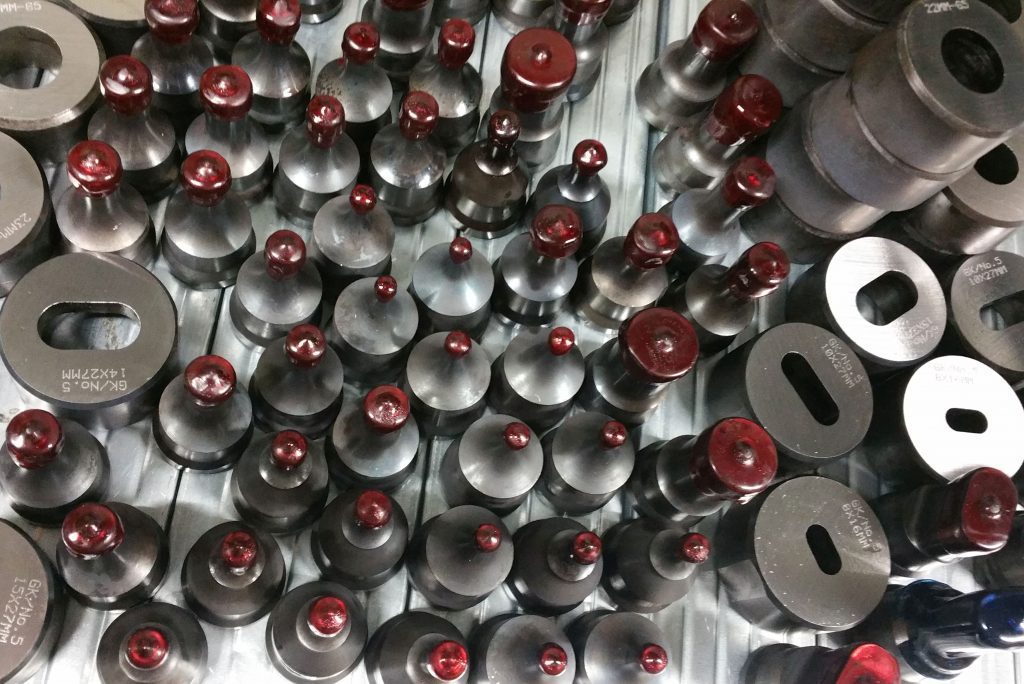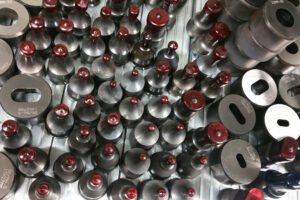Punches and dies are an ideal means of piercing sheet metal with precision and high repeatability, but one which has a low set-up cost and is almost completely maintenance-free. And all this while producing scrap that is manageable rather than piles of swarf. Punching, it seems is an ideal process for low to medium volume workshops, but there still seems to be a certain mysticism about punch and die systems, what they can achieve, and when to replace them.
We at Selmach Machinery are often asked some fundamental questions about these flexible and cost-effective tools, and from those we can see that many people are confused and unsure about what they can – and can’t – achieve with punch and die tools. In this blog we hope to answer some of the more frequently asked questions, and put to bed some myths about these highly flexible tools.
Maximum Thickness
This is an area of real consternation amongst engineers, designers, and workshop managers; just what thickness of sheet can be reliably – and safely – cut with a punch and die system? Common sense tells you it that the actual grade of material being cut will be a big factor in this, but plainly it will also depend upon whether the punch is hand driven or powered. Hand punch sets are the key issue here since the ability to punch them is dictated by the force that a person can apply, and that is dependent upon the combination of material type, material thickness, and hole diameter; the bigger the diameter, the thinner the material needs to be.
The force required to punch is given by:
F = 0.7tL(UTS)
Where: t = sheet thickness
L = shear length (the total perimeter of the shape being cut)
UTS = the ultimate tensile strength of the material being cut.
So, if you know the UTS, you can work out the length of the cut and from there determine the force required for a given material of a certain thickness. So that, ultimately, will be determined by the power of the punching machine that you are using.
Punching thin sheet
There are many design applications where thin steel sheet is preferable due to its light weight coupled with relatively high strength compared to polymer materials. However, that might also mean that excessive distortion in thin sections and the problem of burrs on cut edges, which might mean the need for secondary processes required to get the material back to its proper state, and that adds costs. Ensure that your punch and die set are appropriate for use on thin sheet and run a sample piece before committing to a production run, just to check.
Punch Life
As with all metalworking tools, your punch and die sets will have an expected life but this can be made as long as possible with a little care. Their expected life will actually be several thousand operations, but you need to appreciate that these tools rarely fail suddenly, and may deteriorate over a period of time, which could be months in reality. Cutting edge clearances on punches with these sets is close tolerance and are susceptible to wear, which will gradually increase tolerances and put extra pressure on the cutting edges. Ensure that you are lubricating cutting faces to minimise wear and inspect them regularly. Make sure that alignment and clearances are correct every set up and replace any punches that are chipped. If you see wear on punch or die faces, consider replacing them as soon as possible.
Tougher Materials
It is becoming more common to punch materials previously regarded as ‘difficult’ such as stainless steels, and this can be achieved using standard punch tools too rather than purchasing specialist punches. Plainly, punching stainless sheet is tougher than everyday steels and you need to use greater force for the same thickness of material and generally increase the clearance between punch and die from the usual 0.1T to around 0.2T – where T is material thickness – for safety. Similarly, softer materials such as aluminium need a smaller clearance to counteract the flow that the materials will experience before the cut takes place.
Angle Punches
We at Selmach Machinery are often asked about creating features other than punching through holes. punch tools can be offset by as much as 75° to produce a pushed through section which retains an attached edge such as a louvre or an angle very effectively and cleanly. This tends to be performed on thinner sheet materials due to the angled element of the feature applying complex vector forces on the punch, increasing the possibility of fracture under load.
Specialist Tools
As well as the typical Round, Square and Slot Punch & Dies, we can also offer a range of specialist tools too, including tools for radius punching, Galv vent notching, Counter Sinking as well as being able to accommodate special requests!
Selmach Machinery stock a wide range of Punches that can be quickly set up to reliably produce the pierced sheet material that you need. Call us today to discuss your punching requirements.
If you’re looking to purchase a new Steelworker or Hydraulic Punch, check out our range of machinery, most of which is in stock for rapid dispatch!
Last Updated 22/10/2024
Published 19th September 2017


